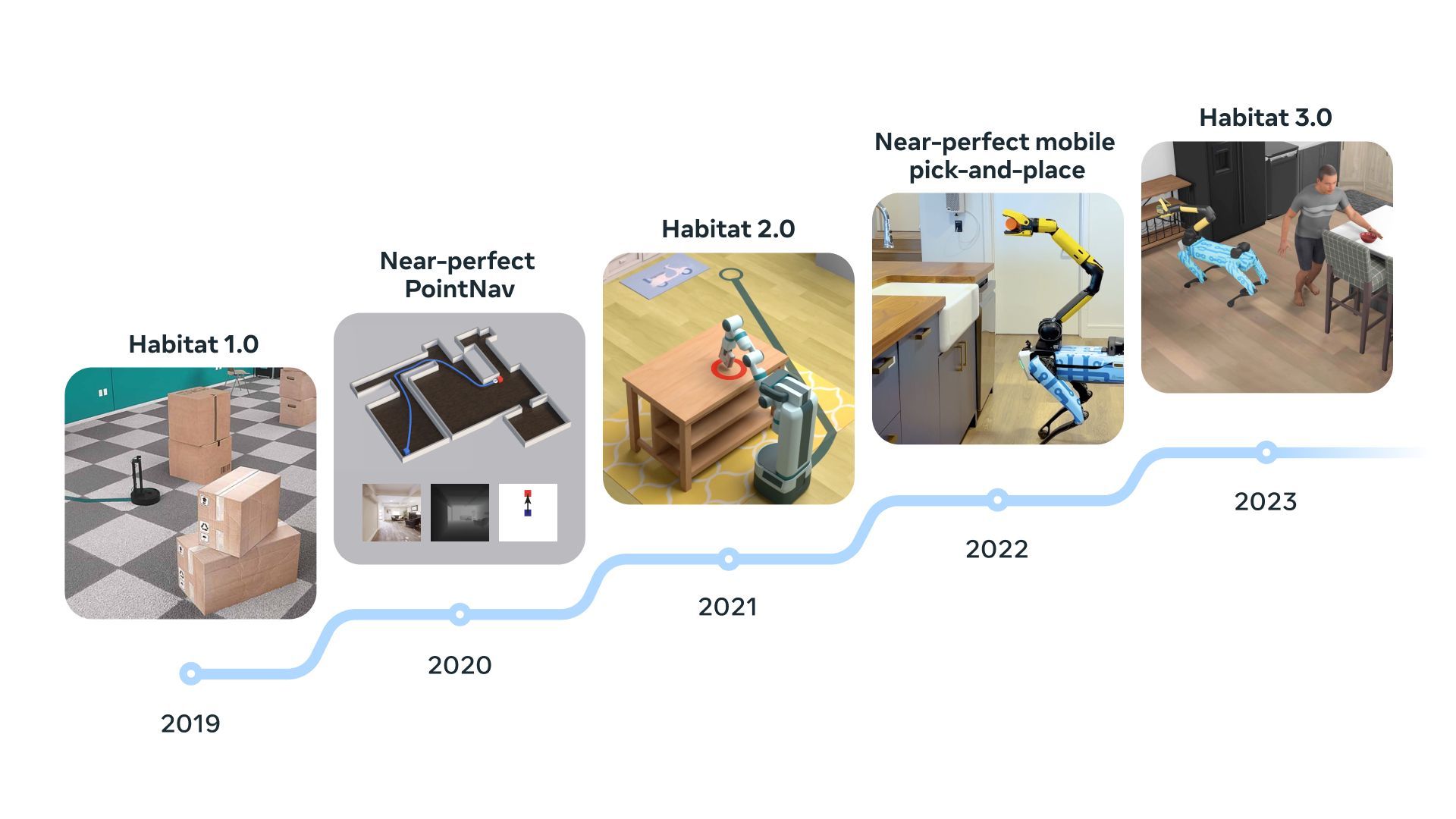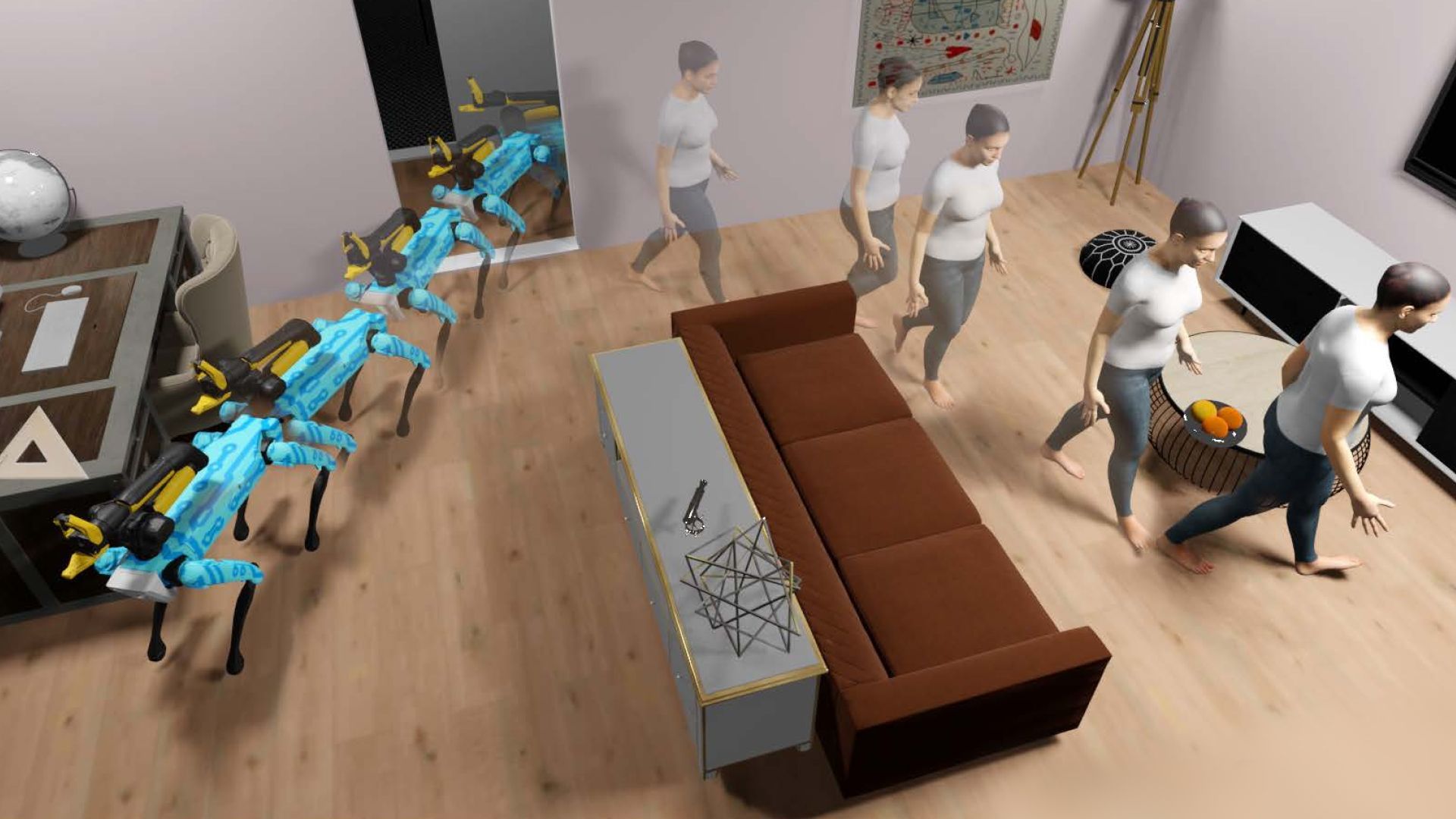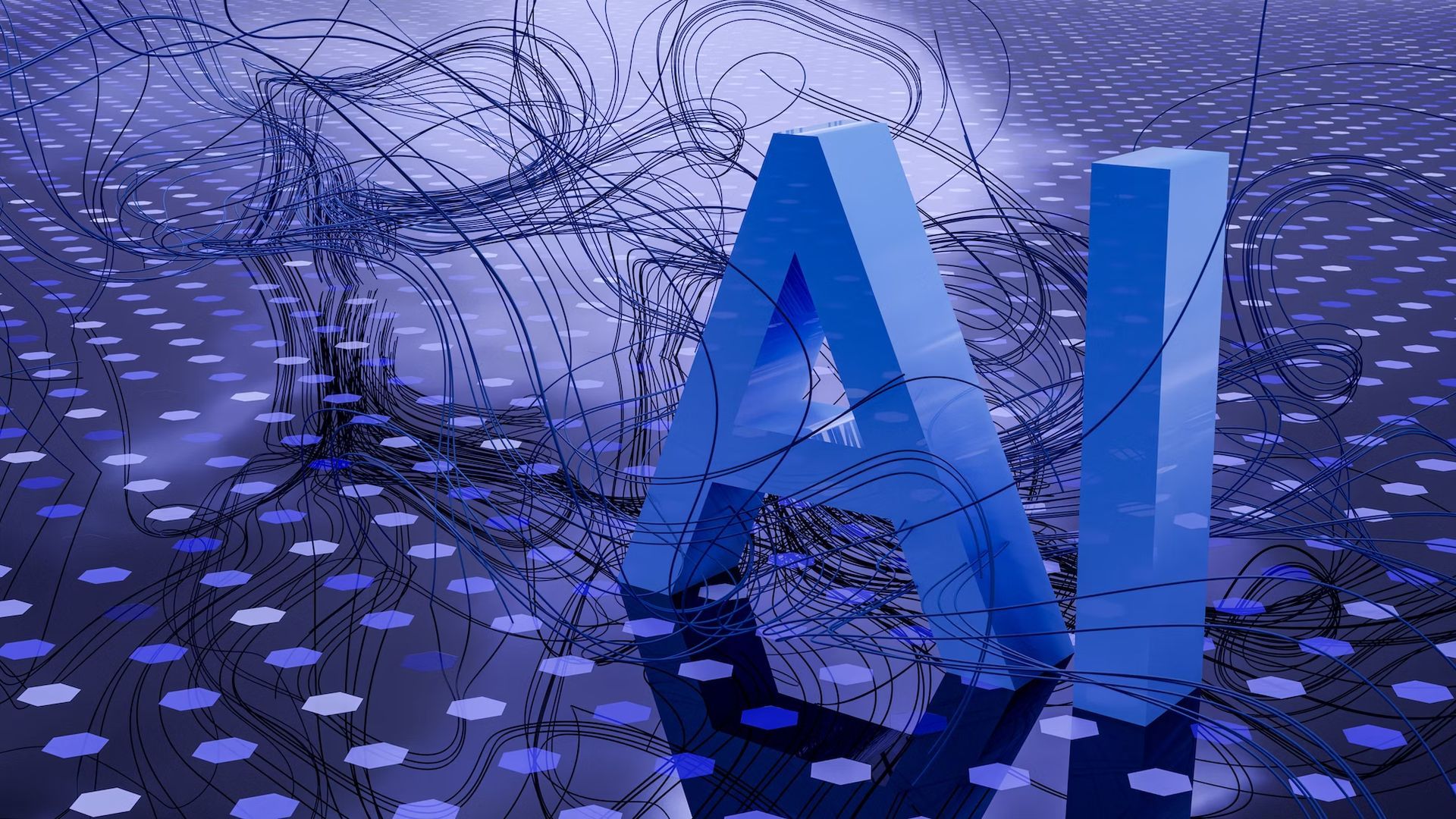Habitat 3.0 marks a transformative leap in the world of embodied AI, setting the stage for a future where robots and humans collaborate seamlessly in dynamic environments.
The team envisions a world where AI agents are not just digital entities but embodied beings that can perceive, interact, and coexist with their environment. These agents are designed to share their surroundings safely with humans, assisting them in both the digital and physical realms. As we stand on the cusp of a new era, Meta is leading the charge with its latest innovations, aiming to transform our daily lives with the power of socially intelligent robots.
The evolution of Habitat 3.0
Meta’s journey with the Habitat platform has been nothing short of transformative. From its inception, the Habitat simulator has been a beacon of innovation, pushing the boundaries of what’s possible in the realm of embodied AI.
Habitat 3.0 represents the culmination of years of research and development. Building on the successes of its predecessors, Habitat 3.0 is designed to foster collaboration between robots and humanoid avatars in realistic settings. Whether it’s tidying up a living room or assisting in the kitchen, this simulator is paving the way for human-robot collaboration in diverse, realistic, and visually rich tasks.

One of the standout features of Habitat 3.0 is its human-in-the-loop interface. This groundbreaking feature allows real humans to control humanoid avatars, offering a range of control methods, from traditional keyboard and mouse setups to immersive VR headset experiences. This fusion of the digital and physical worlds is not just a technological marvel but a testament to Meta’s commitment to creating a future where humans and robots can coexist and collaborate seamlessly.
Habitat 3.0
At the heart of Meta’s advancements in embodied AI lies Habitat 3.0. This state-of-the-art simulator is not just an upgrade; it’s a revolutionary step forward. Designed to support both robots and humanoid avatars, it sets the stage for unprecedented human-robot collaboration in home-like environments. AI agents trained with Habitat 3.0 are not just programmed but are taught to find, interact, and collaborate with human partners in everyday tasks. This deep integration ensures that these AI agents enhance human efficiency, making everyday chores smoother and more enjoyable.
Beyond its functional capabilities, Habitat 3.0 is a testament to the power of simulation in the development of AI. With the ability to conduct experiments in a fraction of the time it would take in the real world and the flexibility to change environments instantaneously, Habitat 3.0 offers a safe, efficient, and cost-effective platform for pushing the boundaries of what AI can achieve.

Habitat Synthetic Scenes Dataset (HSSD-200)
Data is the lifeblood of AI, and with the Habitat Synthetic Scenes Dataset (HSSD-200), Meta has ensured that its AI agents have access to the best. This artist-authored 3D dataset is unparalleled in its depth and breadth, featuring over 18,000 objects across 466 semantic categories in 211 scenes. What sets HSSD-200 apart is its realism. The dataset closely mirrors physical scenes, with layouts predominantly based on actual houses and objects that match specific real-world brands and appliances. This attention to detail ensures that AI agents trained on HSSD-200 are better equipped to navigate and interact in real-world settings.
HomeRobot
As the world stands on the brink of a robotics revolution, Meta introduces HomeRobot—a vision of the future of home assistants. This platform is not just about automation; it’s about integration. HomeRobot is designed to perform a wide range of tasks in both simulated and real-world environments, bridging the gap between the digital and physical worlds.
But HomeRobot is more than just a piece of hardware; it’s a platform for collaboration. Meta envisions a community built around HomeRobot, where researchers, developers, and enthusiasts come together to innovate, share, and shape the future of home robotics. With its user-friendly software stack and the backing of Meta’s vast resources, HomeRobot is set to redefine our understanding of what a home assistant can be.

The future
The potential of embodied AI stretches far beyond our current understanding. With platforms like Habitat 3.0 and innovations such as HomeRobot, Meta is not just predicting the future; it’s actively shaping it.
The vision is clear: a world where robots are not mere tools but partners. In homes, they’ll be more than assistants, becoming collaborators that understand and anticipate our needs. In workplaces, they’ll transform industries, bringing efficiency and innovation to new heights. And in public spaces, they’ll ensure safety, convenience, and accessibility for all.
But the journey ahead is not without challenges. Dynamic environments, the ever-evolving nature of human interactions, and the ethical considerations of AI all pose questions that need answers. Yet, with the foundation that Meta has laid, the path forward is illuminated with promise.
Featured image credit: Dima Solomin/Unsplash





